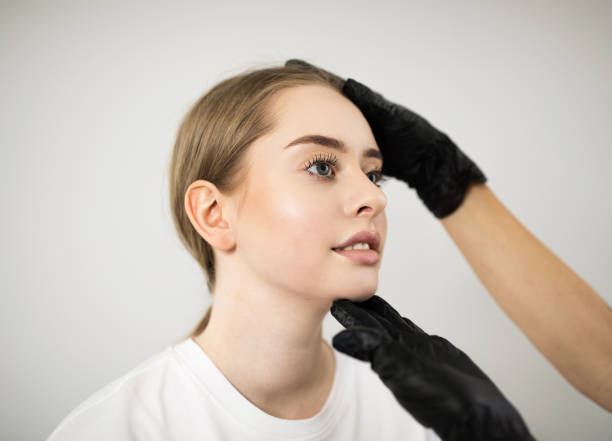Understanding Rhinoplasty: A Comprehensive Guide

Rhinoplasty in Islamabad commonly known as a nose job, is a surgical procedure designed to reshape or repair the nose. This operation can be performed for a variety of reasons, including medical, functional, or cosmetic purposes. While it’s one of the most popular cosmetic surgeries globally, it’s also one of the most complex, requiring a skilled surgeon with a deep understanding of facial anatomy and aesthetic balance.
What is Rhinoplasty?
Rhinoplasty is a procedure that involves altering the structure of the nose to achieve a desired appearance or to improve breathing function. This can include reducing or increasing the size of the nose, changing the shape of the bridge, tip, or nostrils, or correcting nasal asymmetry. Rhinoplasty can also be performed to address structural issues that cause breathing problems, such as a deviated septum.
Types of Rhinoplasty
There are two primary approaches to rhinoplasty: open and closed.
- Open Rhinoplasty: In this method, a small incision is made across the columella (the tissue between the nostrils), allowing the surgeon to lift the skin off the nose and have a clear view of the nasal structures. This approach provides better access to the nasal framework, making it suitable for more complex cases.
- Closed Rhinoplasty: In this approach, all incisions are made inside the nostrils, leaving no visible scars. This method is less invasive and is typically used for less complex procedures where minor adjustments are needed.
Another specialized form of rhinoplasty is revision rhinoplasty, which is performed on patients who are not satisfied with the results of their initial surgery or who have developed complications. This is often more challenging due to the altered anatomy and scar tissue from the previous surgery.
Reasons for Rhinoplasty
Patients seek rhinoplasty for various reasons, which can generally be classified into two categories: cosmetic and functional.
- Cosmetic Reasons: Many individuals opt for rhinoplasty to enhance their appearance. This can involve altering the size or shape of the nose to create better facial symmetry, correcting a bulbous or drooping tip, reducing a hump on the bridge, or narrowing wide nostrils. A well-performed rhinoplasty can harmonize the nose with the rest of the face, boosting a person’s confidence and self-esteem.
- Functional Reasons: For some, rhinoplasty is a medical necessity. Functional rhinoplasty is performed to correct structural issues that impair breathing, such as a deviated septum, enlarged turbinates, or nasal valve collapse. These conditions can cause chronic nasal obstruction, leading to difficulty breathing, snoring, and even sleep apnea. In such cases, the primary goal of surgery is to restore proper nasal function, although cosmetic improvements can also be achieved simultaneously.
The Rhinoplasty Procedure
Rhinoplasty is typically performed under general anesthesia, although local anesthesia with sedation can be an option for less extensive procedures. The surgery usually takes between one to three hours, depending on the complexity of the case.
During the procedure, the surgeon will make incisions according to the chosen approach (open or closed) and then carefully reshape the nasal structures. Cartilage and bone may be removed, reshaped, or augmented with grafts. If necessary, the septum will be straightened, and any obstructions inside the nose will be corrected. Once the desired changes are made, the incisions are closed, and the nose is covered with a splint to support the new shape during healing.
Recovery and Results
Recovery from rhinoplasty can vary depending on the extent of the surgery. Most patients experience swelling, bruising, and discomfort for the first few days, but this typically subsides within a week or two. The external splint is usually removed after one week, and most people can return to work and normal activities within two weeks. However, it can take up to a year for all swelling to resolve and for the final results to be fully apparent.
It’s important for patients to follow their surgeon’s postoperative instructions carefully to ensure proper healing and the best possible outcome. This includes avoiding strenuous activities, not blowing the nose, and protecting the nose from any impact during the recovery period.
Risks and Considerations
As with any surgical procedure, rhinoplasty carries risks. These can include infection, bleeding, scarring, and complications related to anesthesia. There’s also a possibility of dissatisfaction with the aesthetic results, which may require revision surgery.
Choosing an experienced and board-certified plastic surgeon is crucial to minimizing these risks and achieving the desired outcome. Patients should have realistic expectations and understand that while rhinoplasty can significantly enhance appearance and function, perfection is not always attainable.
Conclusion
Rhinoplasty is a versatile procedure that can address both cosmetic and functional concerns, helping patients achieve a nose that complements their facial features and improves their quality of life. With careful planning, a skilled surgeon, and realistic expectations, rhinoplasty can provide long-lasting and life-changing results.







